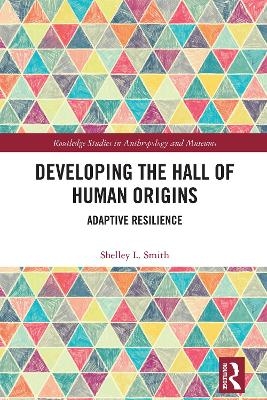
Developing the Hall of Human Origins
Adaptive Resilience
Seiten
2024
Routledge (Verlag)
978-1-032-67997-6 (ISBN)
Routledge (Verlag)
978-1-032-67997-6 (ISBN)
This book focuses on the development of the National Museum of Natural History’s David H. Koch Hall of Human Origins, exploring the origins of the exhibit, its changes over time, and the associated educational and public outreach activities of members of the Smithsonian’s Human Origins Program
This book focuses on the development of the National Museum of Natural History’s David H. Koch Hall of Human Origins. As one of the most visited human evolution exhibits in the world and the largest such exhibit in the United States, it has tremendous influence on public perception and knowledge of human evolution. The chapters explore how this exhibit came about, how it has changed since opening, and the associated educational and public outreach activities of members of the Smithsonian’s Human Origins Program. The author uses the term “adaptive resilience” to describe a central theme of the exhibit, our species’ adaptation to changing environments as a key feature of our success, and to refer to the resilience of Richard B. Potts in creating his vision for the hall. Contextual sections situate the hall’s development within the history of paleoanthropology, the politics of evolution and climate change, and African contributions. The book will be of particular interest to scholars of anthropology and museum studies as well as the history of science and science communication.
This book focuses on the development of the National Museum of Natural History’s David H. Koch Hall of Human Origins. As one of the most visited human evolution exhibits in the world and the largest such exhibit in the United States, it has tremendous influence on public perception and knowledge of human evolution. The chapters explore how this exhibit came about, how it has changed since opening, and the associated educational and public outreach activities of members of the Smithsonian’s Human Origins Program. The author uses the term “adaptive resilience” to describe a central theme of the exhibit, our species’ adaptation to changing environments as a key feature of our success, and to refer to the resilience of Richard B. Potts in creating his vision for the hall. Contextual sections situate the hall’s development within the history of paleoanthropology, the politics of evolution and climate change, and African contributions. The book will be of particular interest to scholars of anthropology and museum studies as well as the history of science and science communication.
Shelley L. Smith is Professor of Anthropology at the University of Texas at Arlington, USA.
1. Introduction; 2. The Interim; 3. Millennial Visions; 4. Re-ignition; 5. Creative Vision; 6. Distillation; 7. The Environmental Theme; 8. Implementation; 9. Continuation
| Erscheinungsdatum | 02.08.2024 |
|---|---|
| Reihe/Serie | Routledge Studies in Anthropology and Museums |
| Zusatzinfo | 7 Line drawings, black and white; 13 Halftones, black and white; 20 Illustrations, black and white |
| Verlagsort | London |
| Sprache | englisch |
| Maße | 156 x 234 mm |
| Gewicht | 539 g |
| Themenwelt | Kunst / Musik / Theater |
| Reisen ► Reiseführer | |
| Geisteswissenschaften ► Geschichte ► Hilfswissenschaften | |
| Naturwissenschaften ► Biologie ► Humanbiologie | |
| ISBN-10 | 1-032-67997-2 / 1032679972 |
| ISBN-13 | 978-1-032-67997-6 / 9781032679976 |
| Zustand | Neuware |
| Informationen gemäß Produktsicherheitsverordnung (GPSR) | |
| Haben Sie eine Frage zum Produkt? |
Mehr entdecken
aus dem Bereich
aus dem Bereich
innovative Wege der Konzeption und Evaluation von Ausstellungen
Buch | Softcover (2024)
transcript (Verlag)
37,00 €


